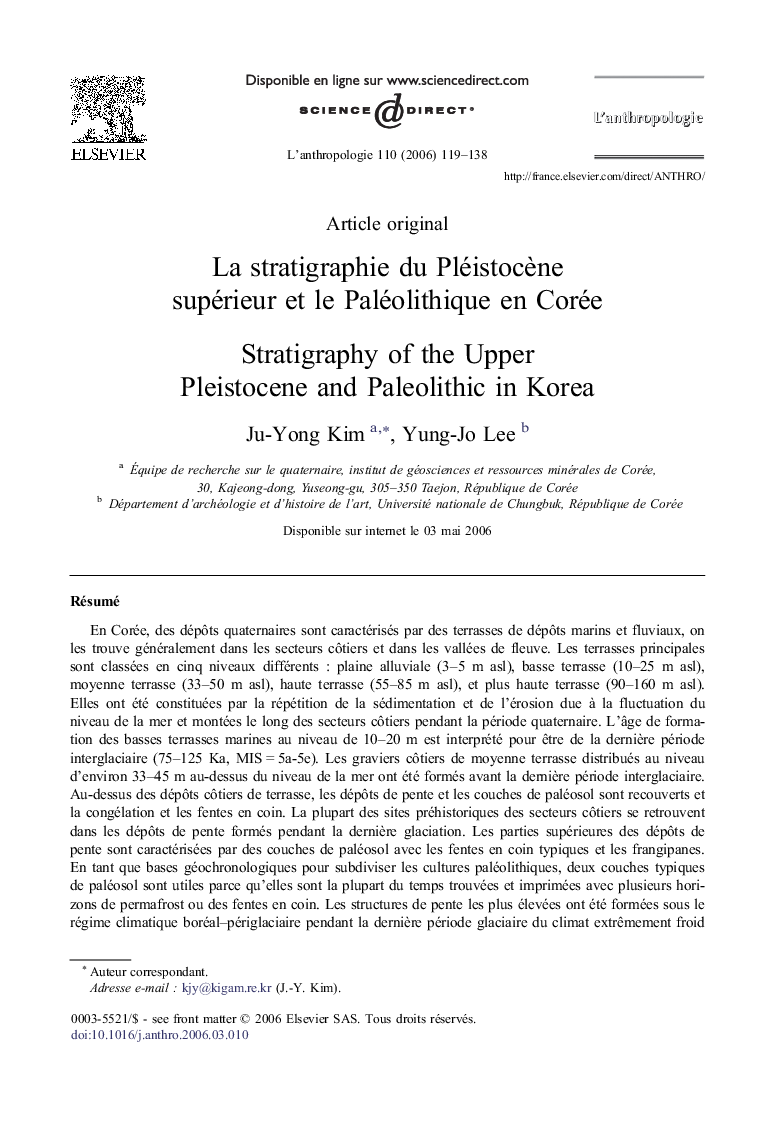| Article ID | Journal | Published Year | Pages | File Type |
|---|---|---|---|---|
| 1034018 | L'Anthropologie | 2006 | 20 Pages |
Abstract
In Korea, Quaternary deposits are characterized by marine and fluvial terrace deposits, commonly found in the coastal areas and at the sides of river valleys. The major terraces are classified into 5 different levels, i.e., alluvial plain (3-5Â m asl), lower terrace (10-25Â m asl), middle terrace (33-50Â m asl), high terrace (55-85Â m asl), and highest terrace (90-160Â m asl). They were formed by the repetition of sedimentation and erosion due to sea level fluctuation and uplifting along the coastal areas during Quaternary period. The formation age of the lower marine terraces at the level of 10-20Â m is interpreted to be the last interglacial (75-125Â Ka, MISÂ =Â 5a-5e). The middle coastal terrace gravels distributed at the level of about 33-45Â m above mean sea level and are to be formed before the last interglacial. Above coastal terrace deposits, slope deposits and paleosol layers are overlain and freezing and thawing crackings were developed in them. Major prehistory archaeological sites in the coastal areas are found in the slope deposits formed during last glaciations. The upper parts of the slope deposits are typified by paleosol layers with typical frost cracks (soil wedges) and frangipanes. As geochronological bases for subdividing Paleolithic cultures, two typical paleosol layers are useful because they are mostly found and imprinted with several horizons of frost cracks or soil wedges. The uppermost crack structures were formed under the boreal-periglacial climatic regime during the last glacial period of extremely cold-dry climate in Korea. The upper pedogenetic sediments containing frost cracks or soil wedges were formed between 24 and 17Â Ka in many Paleolithic profiles. The lowermost paleosol layer with frost cracks (soil wedge), strongly attacked into hillslope sediments or last interglacial saprolite layers on the weathered basement rocks, were detected at least as old as 59-74,000Â Ka. Lastly upper Paleolithic cultural layers were found in the young fluvial deposits, which had been formed since the Last Glacial Maximum (LGM). Some of them were particularly continued as late as the Pleistocene-Holocene Transition Period.
Related Topics
Social Sciences and Humanities
Arts and Humanities
History
Authors
Ju-Yong Kim, Yung-Jo Lee,
